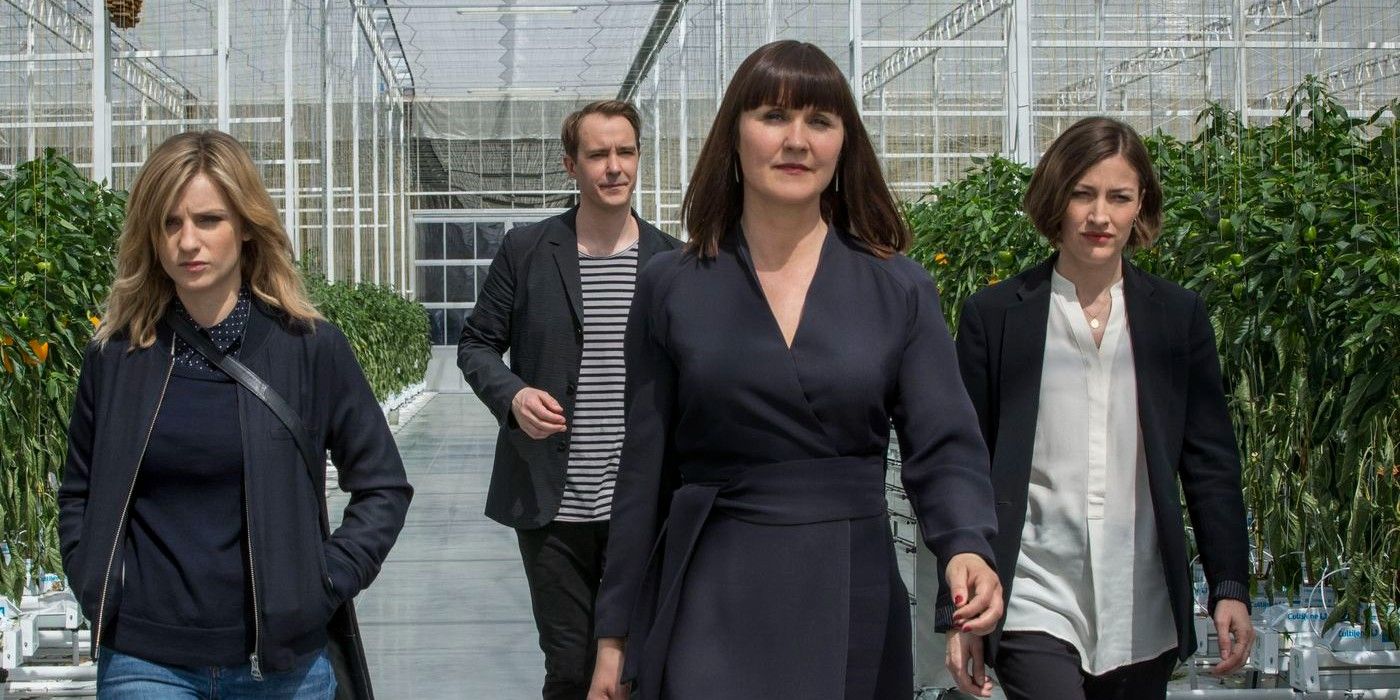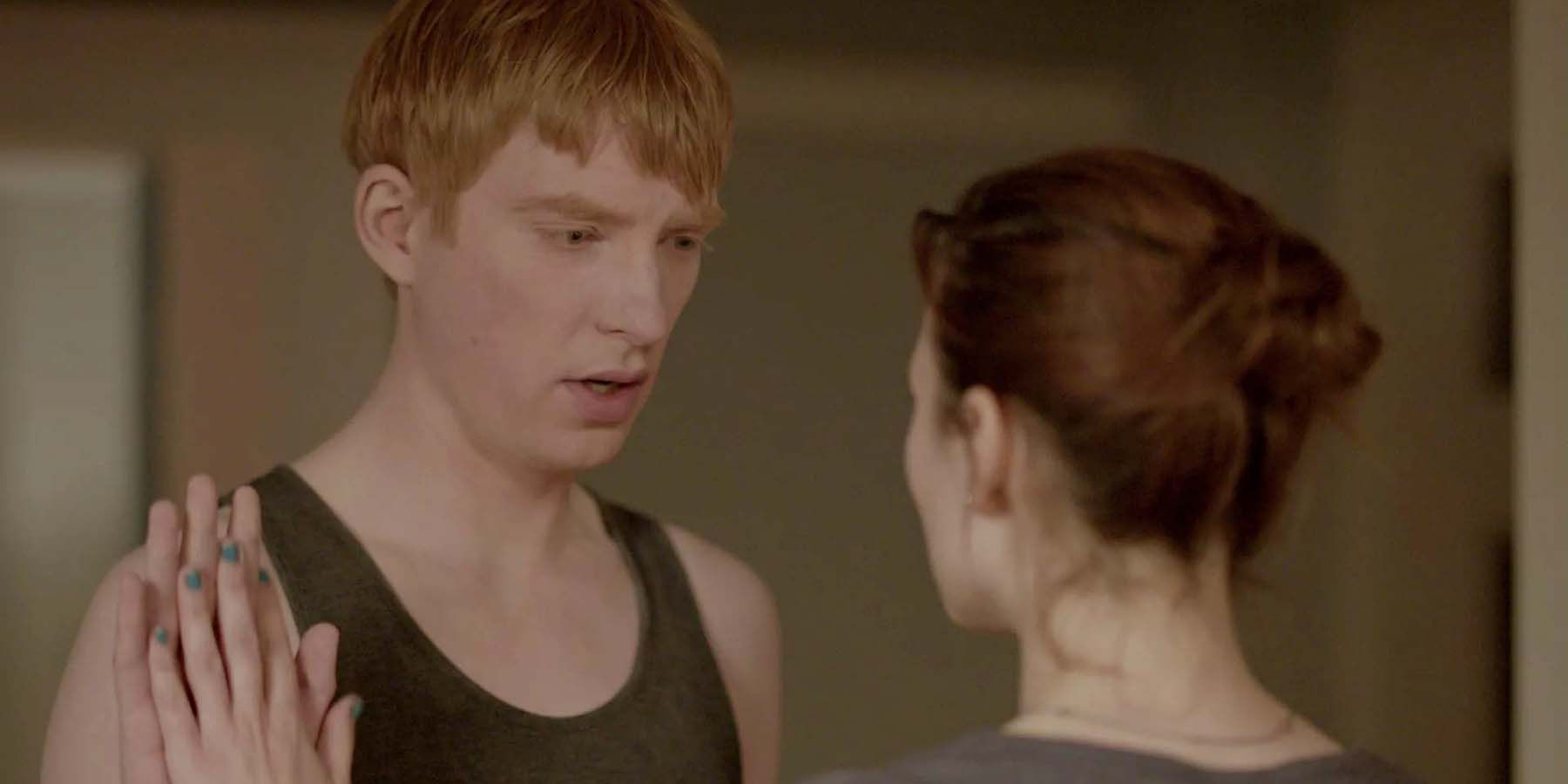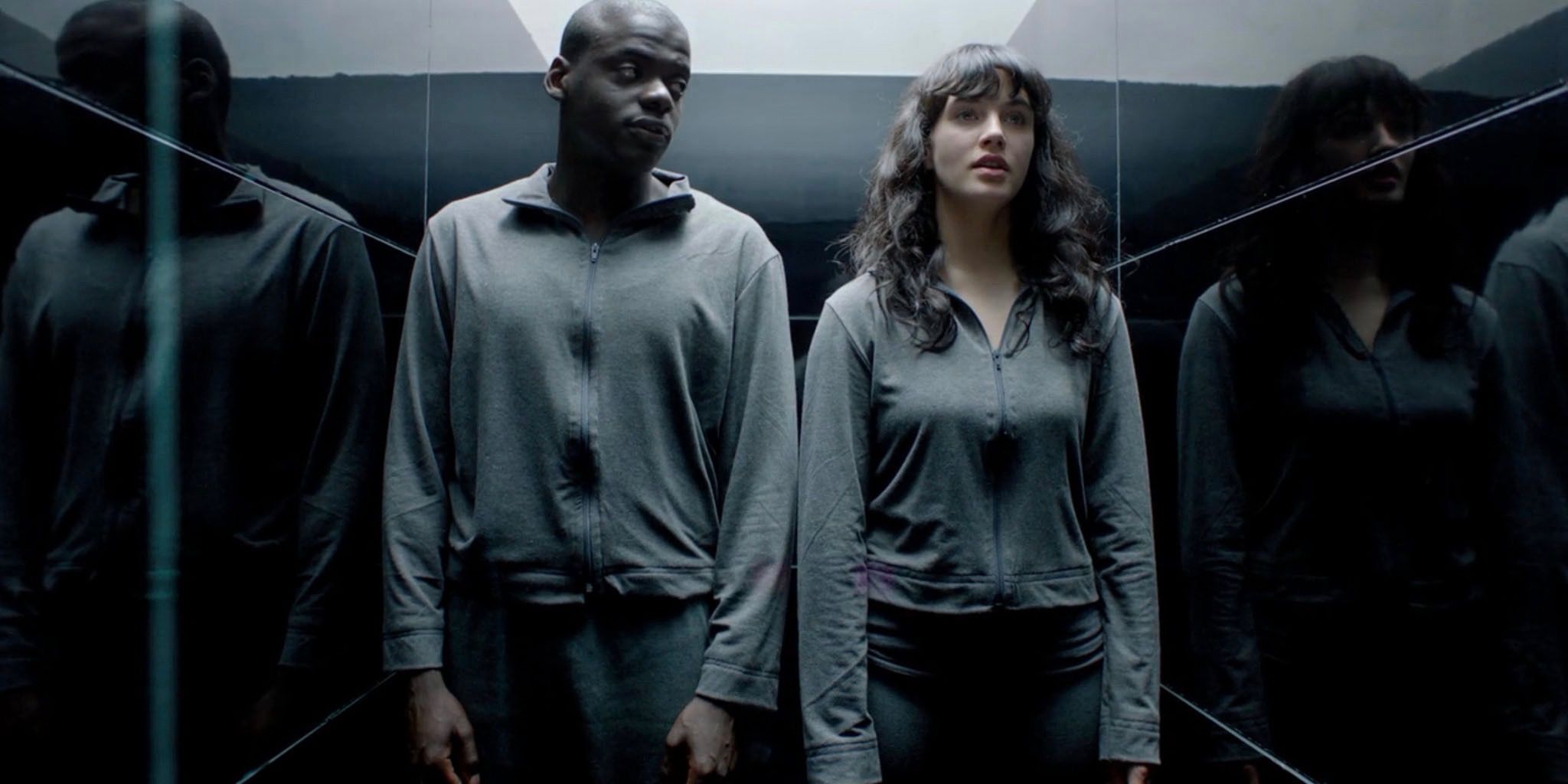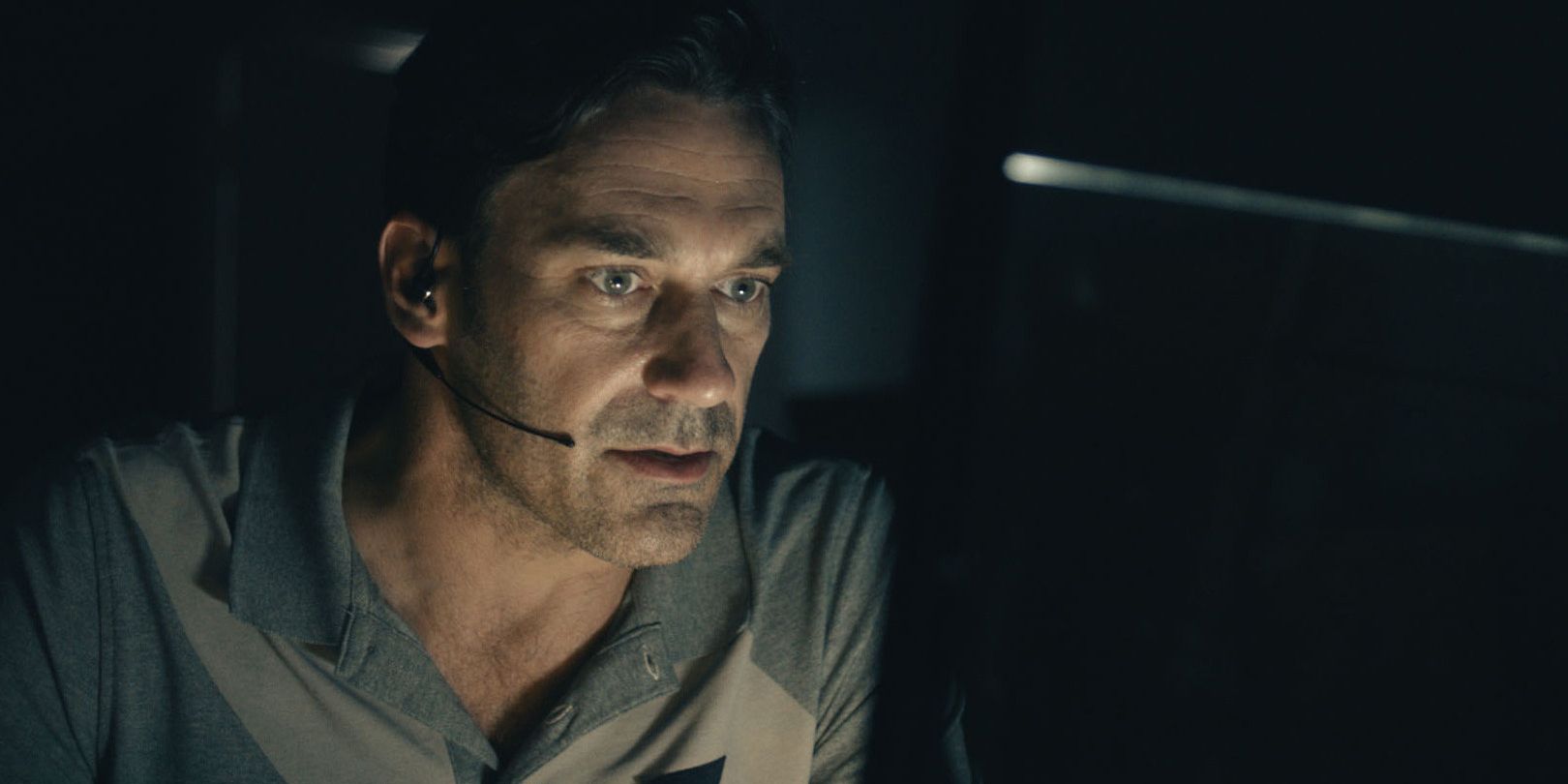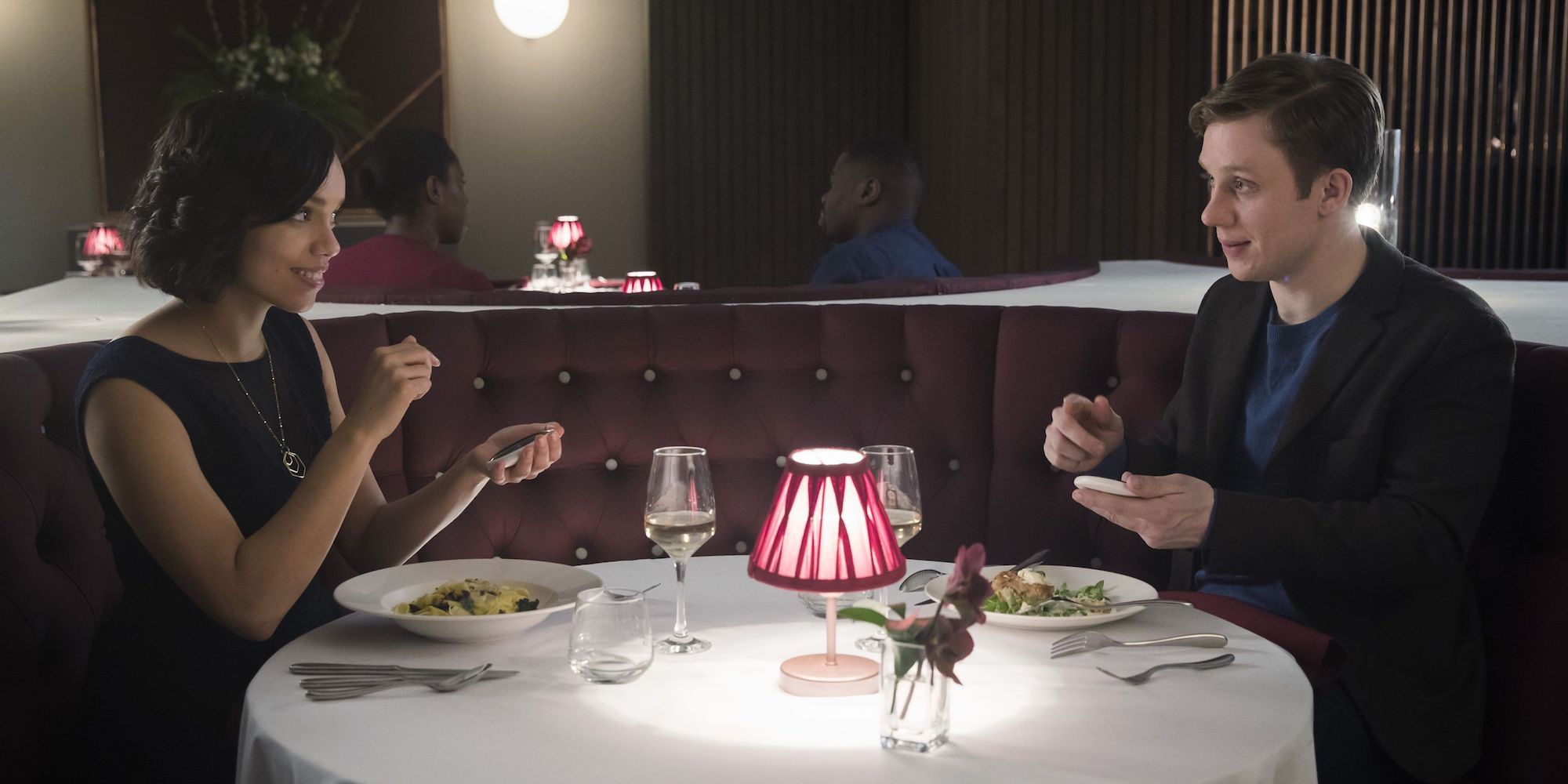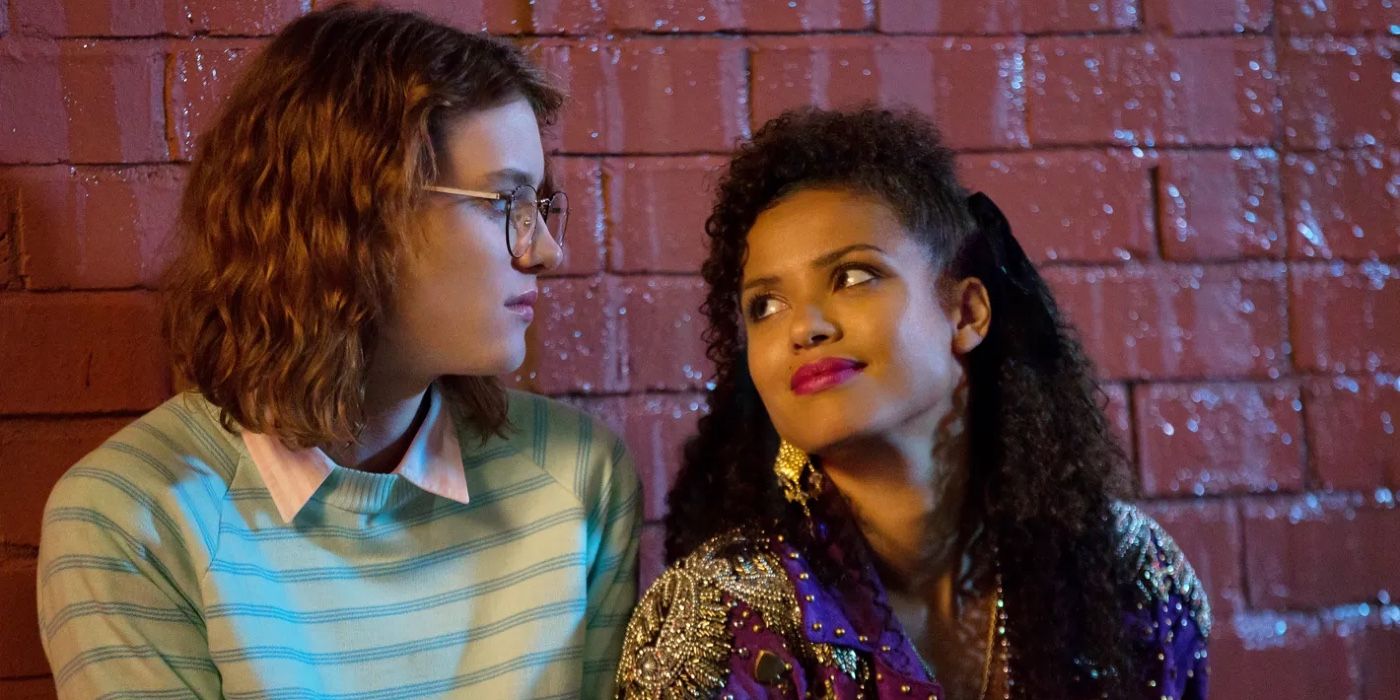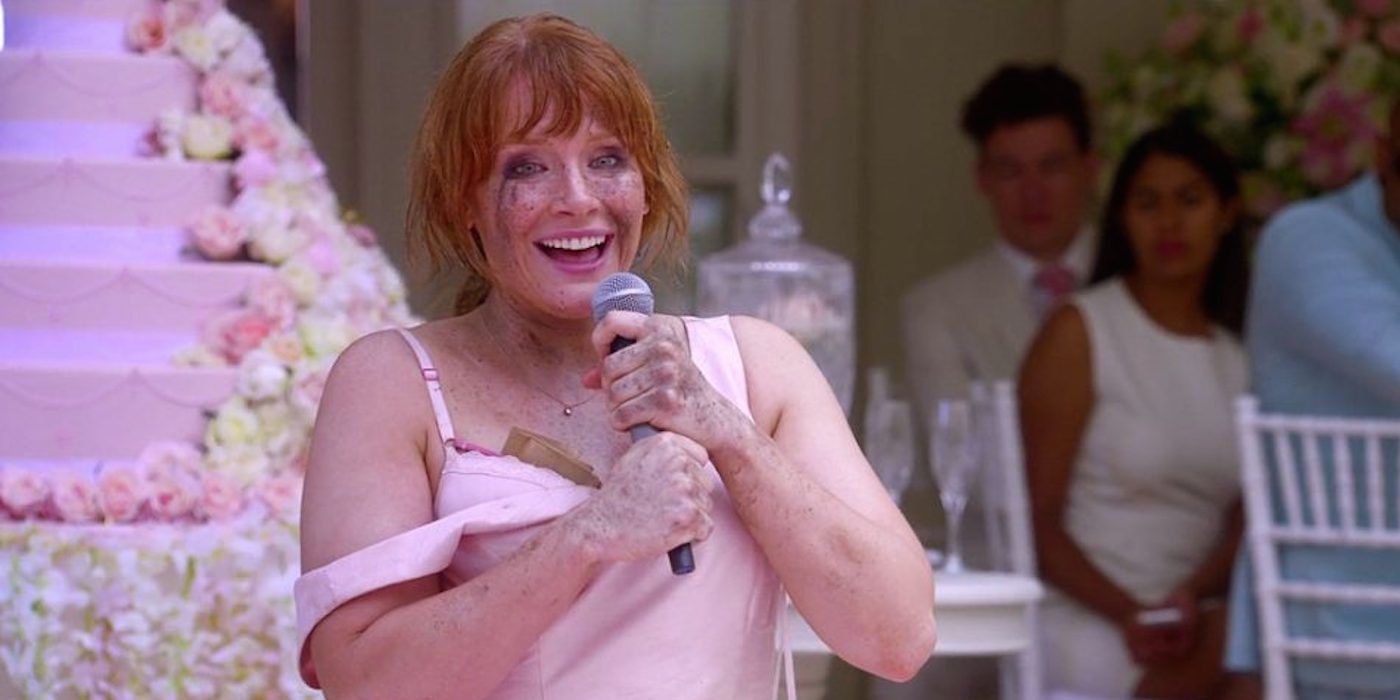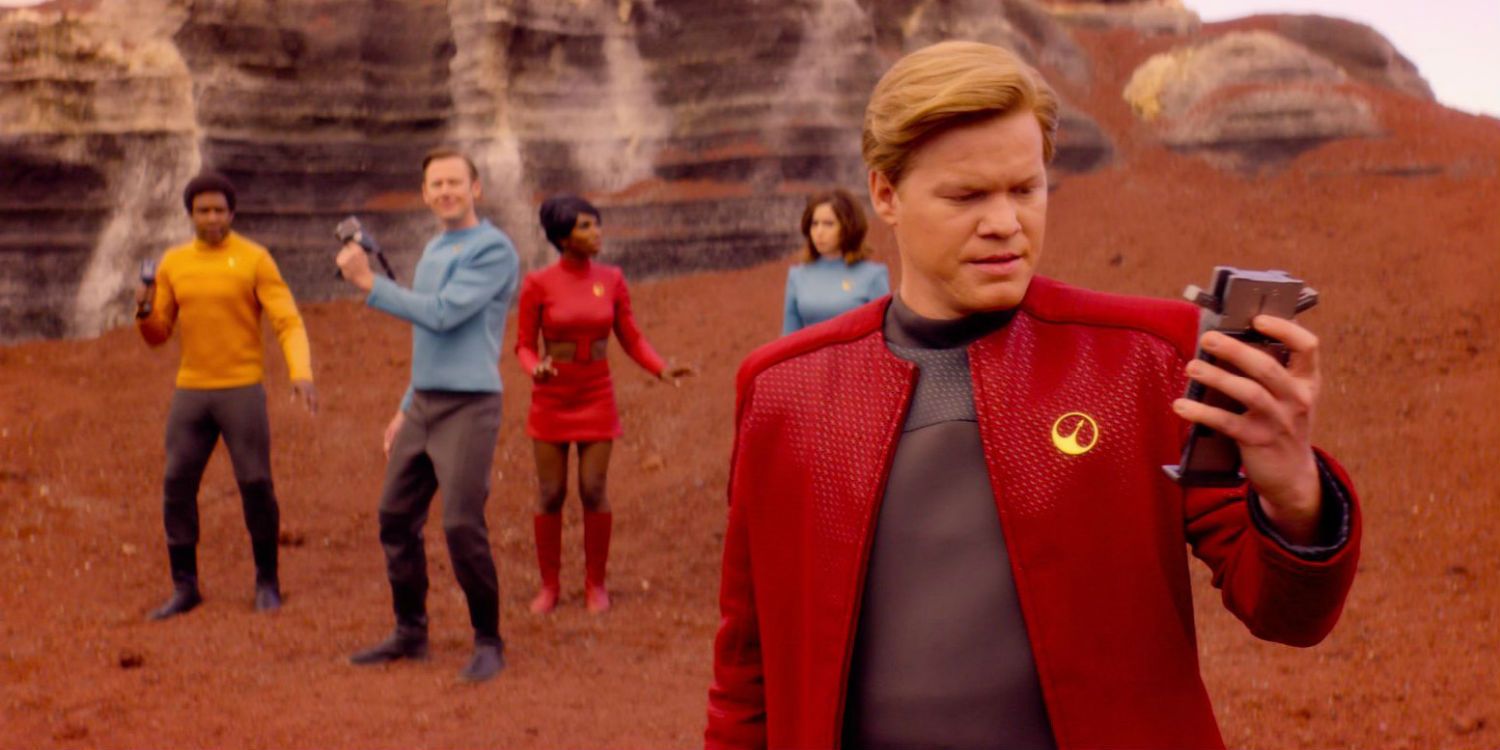Summary
- Black Mirror episodes explore dark tech pitfalls, shaping dystopian worlds with social commentary and subtle continuity for a recognizable tone.
- Episodes like “National Anthem” and “Crocodile” emphasize the dark aspects of humanity when faced with technology and consequences.
- Fan-favorite episodes like “USS Callister” and “San Junipero” showcase the series’ versatility, combining thought-provoking themes with entertainment.
The best Black Mirror episodes ranked from worst to best reflect the greatest installments of the outstanding Netflix anthology series. Since it first premiered back in 2011, Black Mirror has been the modern answer to the iconic and darkly futuristic series The Twilight Zone. Black Mirror focuses heavily on sci-fi and dystopian portraits of hypothetical worlds that are shaped by detrimental influences of advanced technologies and the downfall of modern society.
The series has consistently found creative ways to comment on the cautionary pitfalls of technology and how they can alter a more naturalistic lifestyle for people on Earth. Each Black Mirror episode begins with a fresh concept while also retaining some subtle continuity in themes and other easter eggs that give the series a recognizable tone and overall perspective. The very best Black Mirror episodes use a creative technological concept to reveal dark aspects of human nature and the world at large when innovation disregards humanity’s best interests.
15 “National Anthem”
Season 1, Episode 1
The very first episode of Black Mirror is one of the most disturbing, even though it doesn’t utilize the usual theme of the dangers of technology. Instead, the episode examines the social implications of a political leader being forced into a depraved act.
Here, the Prime Minister is manipulated into having sex with a farm animal when a member of the royal family is kidnapped – and it’s televised live. The episode is very different from the rest of the series, but the shock, the darkness, and the examination of humanity are all ideas that the show plays with throughout its entire run.
While it doesn’t focus on how technology can be used in dangerous ways, it does examine the spread of information across social media with the initial demands of the kidnapper being published on YouTube and those in online communities spreading the information far and wide. It gives a tease of just what’s to come from the series.
14 “Crocodile”
Season 4, Episode 3
Again, this Black Mirror episode stands out because it isn’t like so many other Black Mirror episodes. Instead, it’s a thriller that plays out almost like a noir film as Andrea Riseborough plays a woman slowly unraveling under the weight of her lies.
Riseborough plays Mia, a woman who gets a surprise visit by an ex-boyfriend when he threatens to publicly reveal their shared secret: they accidentally killed someone years earlier. To keep him quiet, she kills him. Eventually, however, an insurance company employee reads her mind with the help of some new technology and knows exactly what she did, so, naturally, Mia feels the need to get rid of them too.
Mia is willing to do whatever it takes, no matter how difficult it is, to hold onto her life. It’s an episode about desperation, lying, and consequences. The story is all told under Riseborough’s masterful performance.
13 “Bandersnatch”
2018 Special
Netflix started adding programming to its streaming options that were similar to the idea of the “choose your own adventure” books that were popular decades ago. Most of that content, however, has been aimed at children, helping them to engage with what they are watching. “Bandersnatch” allowed Black Mirror fans to do that, making it Netflix’s first interactive programming aimed at adults instead.
The special is roughly double the length of a typical Black Mirror episode and has five completely different outcomes depending on the path the viewer decides to take. In the special, a video game programmer is making a game in a similar vein, one that allows its players to choose their adventure as well. Along his development journey, however, are demons from his own past that he (and the audience) must navigate. It makes for a fascinating way to tell a Black Mirror story.
12 “Loch Henry”
Season 6, Episode 2
“Loch Henry” is more like a straight-up murder mystery than most episodes of Black Mirror. It stands out because it seems like it’s going to give the audience a reprieve from the darker aspects of society’s advancements that the rest of the show holds a mirror to. It still, however, highlights the darker sides of humanity, but this time, by spotlighting civilian investigators.
Set in Scotland, a couple are on their way to make a documentary but stop in a small town before their ultimate destination. While there, the woman is intrigued by a series of murders that happened in the town years ago and begins investigating herself with the very equipment meant to be used for the documentary.
The episode ultimately skewers the true crime trend as documentaries, podcasts, and civilian investigations have emerged heavily as part of pop culture in the last few years. Of course, it does it with some signature Black Mirror twists and turns along the way.
11 White Bear
Season 2, Episode 2
“White Bear” shows the worst of humanity.
If the last entry is more of a murder mystery, “White Bear” is absolutely horror. The episode is incredibly bleak and terrifying, but also incredibly shot and acted. “White Bear” opens like a desolate scene from a zombie movie with a lone person and a world of confusion, but it quickly becomes much more chaotic than that.
The episode opens with a woman not knowing who she is or where she is, only to be chased by both a masked executioner and groups of people with cell phone cameras intent on recording her. Clues emerge as the narrative plays out about the woman’s identity and just what is really going on.
Like several Black Mirror episodes, this one asks the audience to get philosophical about crime and punishment. While many episodes demonstrate just how disturbing humanity can be, “White Bear” shows the worst of humanity.
Related
8 Black Mirror Sequel Episodes That We’d Actually Love To See
With the announcement of Black Mirror season 7 having a sequel to the episode USS Callister, it’s worth looking at other episodes that need a sequel.
10 “Playtest”
Season 3, Episode 2
Black Mirror season 3, episode 2 “Playtest” begins as a seemingly simple and innocent premise in which an American traveler opts to participate in a new gaming system for some extra cash. Cooper (Wyatt Russell) is full of amiable energy and lust for adventure as he discovers a new immersive virtual reality technology game that blends the lines between reality and projection to the point that he doesn’t know if he has escaped the game or not.
“Playtest” is outstanding for its unexpected psychological horrors that build at a relentless pace. It is the first Black Mirror episode to really embrace horror in a direct way as the haunted house game that Cooper finds himself is tense and terrifying at times. Russell makes for a terrific grounded lead who is complicated but likable. His performance only makes the tragic twist ending in “Playtest” all the more impactful.
9 “Hated In The Nation”
Season 3, Episode 6
“Hated in the Nation” is one of the longest Black Mirror episodes at 1 hour and 29 minutes, making it essentially a feature-length film. That is appropriate given the large-scale thriller story it has to tell. The episode deals with the impact of social media with a trend arising online in which hated people in the current news cycle can be tagged online and the person who gets the most tags will be marked for death. Kelly MacDonald and Benedict Wong play agents attempting to shut down the killings.
Despite being the final episode of Black Mirror season 3, which remains its strongest overall season in the eyes of many, the quality of “Hated in the Nation” is good enough to be its own standalone installment. The celebrated episode takes the familiar procedural drama premise and elevates it with a fascinating cautionary sci-fi concept of technology’s impact on the world of politics.
8 “Be Right Back”
Season 2, Episode 1
“Be Right Back” is one of the most sentimental and all-around odd episodes of Black Mirror that centers on the notions of grief and identity with a brilliant premise. A lonely widow, Martha (Hayley Atwell), discovers a technology that allows her to communicate and interact with an artificial version of her dead husband, Ash (Domhnall Gleeson).
What starts as an AI system that allows her to text with him evolves into phone calls and then an actual clone. With AI and deepfake becoming a continuing discussion in modern society, this episode proves how ahead of its time Black Mirror can be with some of the topics they touch upon, with this one coming during the show’s debut season.
The episode brings into question whether or not technologies like this should exist if they were actually possible and introduces a new eerie aspect of the notion of distrusting artificial intelligence.
7 “Fifteen Million Merits”
Season 1, Episode 2
Before his breakout role in Jordan Peele’s Get Out, Daniel Kaluuya gave a powerhouse performance in this season 1 episode of Black Mirror that is also one of its best. “Fifteen Million Merits” stars Kaluuya as Bing, one of several inhabitants of a mysterious dystopian place in which people must exercise to earn digitalized currency. The credits can be used to purchase food, entertainment, and even the chance to appear on an America’s Got Talent type of show for the chance to escape the mundane common lifestyle.
The episode is a great metaphor for the repetitive nature of everyday life and the sinister undertones of some entertainment talent shows. Kaluuya gives an intense and layered performance that makes it unsurprising that he became a star after this. It is also a prime example of the amazing world-building Black Mirror can accomplish over the course of one episode.
6 “White Christmas”
Season 2, Episode 4
While it is common for sitcoms to have holiday episodes, Black Mirror does not seem like the kind of series to get into the Yuletide spirit. However, “White Christmas” delivers a Christmas special that is as gripping a story as the show has ever delivered while also being a grim holiday offering.
Jon Hamm and Rafe Spall star in the episode as two men working at a mysterious isolated worksite over Christmas and spend the day drinking and getting to know each other with stories about their pasts. “White Christmas” pulls off one of the greatest twists in the series, which will not be discussed for the sake of avoiding spoilers.
This episode is considered particularly dark even for Black Mirror, which is potentially why it’s so highly rated among fans. Hamm is an exceptional talent who seamlessly comes off as charming and threatening while Spall is just as good with the complicated protagonist whose ending is one of the most disturbing in the series.
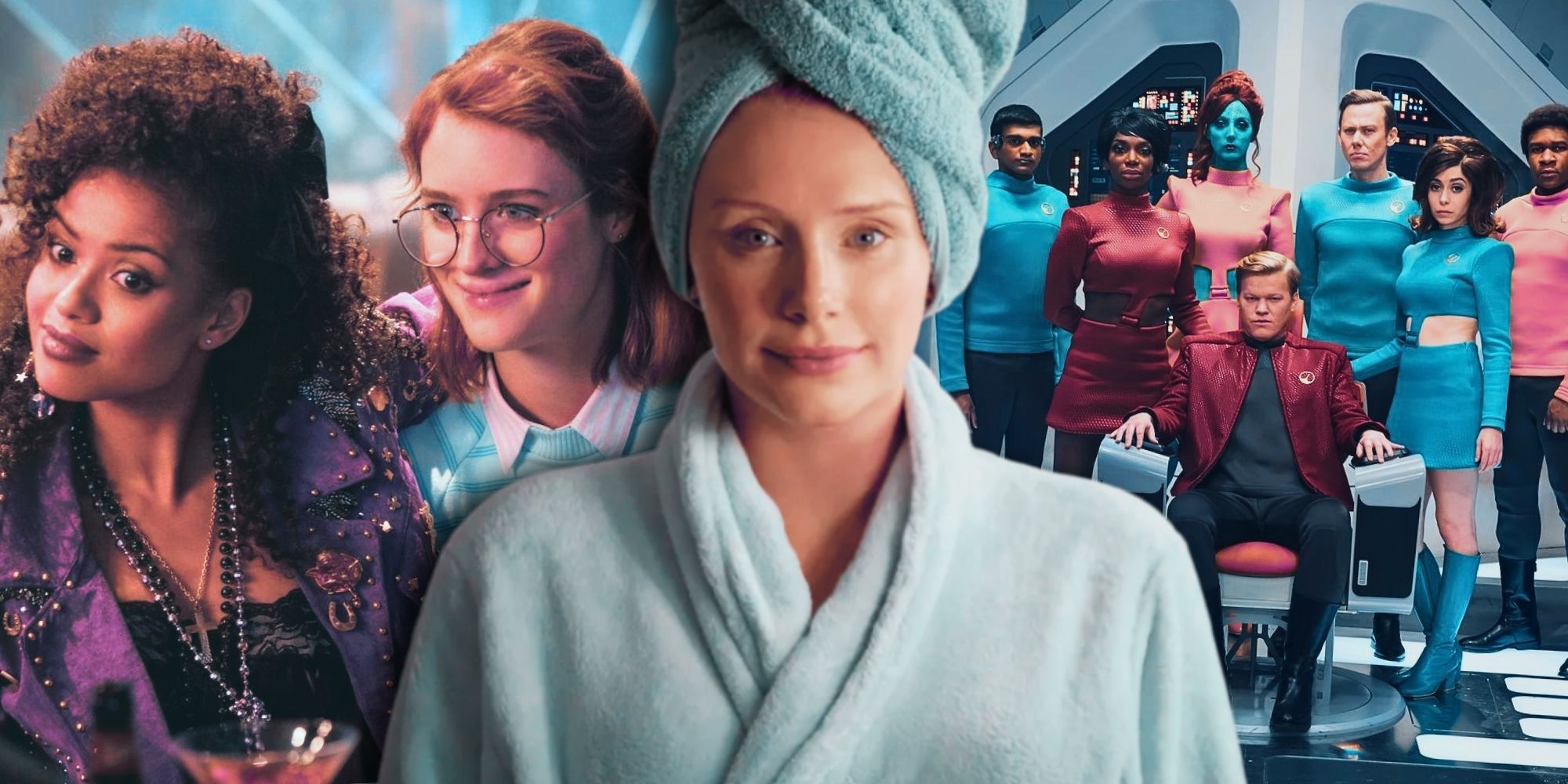
Related
Black Mirror Season 7: Confirmation, Episode Count, & Everything We Know
Black Mirror season 7 could be the most innovative yet as Charlie Brooker’s anthology goes beyond dystopian futurism.
5 “Hang The DJ”
Season 4, Episode 4
“Hang the DJ” follows the endearing premise of two young adults who meet online and schedule a face-to-face date. The innovative twist in the Black Mirror episode is that they are given an expiration date on their relationship before it ever even begins as part of the advanced dating program both protagonists signed up to participate in. Eventually, they realize that there are flaws in the logic of the program and aim to work against it in what is considered by many to be the highlight episode of Black Mirror season 4.
Black Mirror has been criticized in the past for simply delivering one grim sci-fi story after another, but this is a clear example of how versatile the series can be while still being true to itself. It is a romantic comedy take on the Black Mirror story that explores the dynamics of a relationship just as much as it critiques dating apps. It also is a rare optimistic ending.
4 “San Junipero”
Season 3, Episode 4
“San Juipero” was one of the standout episodes in the series that proved the show could be thought-provoking in its exploration of technology while also being entertaining and fun. The episode takes place in a 1980s-style world and follows two women who meet up in the vibrant nightlife of the city and gradually fall in love. However, as is typically the case with Black Mirror, this world is not as it seems.
“San Junipero” is one of the better-known Black Mirror episodes for its inclusion of LGBTQ+ themes and overall visually beautiful landscapes. The relationship between the two love interests in the episode is authentic and full of chemistry, which initially makes the viewer wonder why this is part of the Black Mirror shared universe at all. In time, the awe-inspiring technological twist is revealed as the truth of the San Junipero setting is realized. The episode has high rewatch potential and is one of the lighter episodes of the series.
3 “The Entire History Of You”
Season 1, Episode 3
Black Mirror season 1, episode 3 “The Entire History of You” introduces one of the more recognizable technologies of the series, a neural implant that is later referred to as the Z-eye in “White Christmas.” The implant gives the user the power to store and rewatch their memories as videos since the technology records everything that the user does, says, and hears. While the tech sounds amazing, Black Mirror brings up the timeless question regarding innovation of “just because we can, does that mean we should?” and quickly provides a thesis against that inquiry.
Toby Kebbell gives a standout performance in the lead role as a man who is consumed with jealousy and wants to use the omnipresent technology to discover if his partner had an affair. Part of the brilliance of the episode is how it can take such a unique technology and use it to tell a very relatable story about relationships, privacy, and regret.
2 “Nosedive”
Season 3, Episode 1
“Nosedive” opens up Black Mirror season 3 in a utopian world that revolves around the implementation and societal reliance on social rating systems. Residents of the privileged area must have a certain social credit to become eligible for residency which is ultimately influenced by every single social interaction a person has with other people throughout the day. The fluctuating social score can drive even the most polished people to the edge of sanity.
While the idea of online ratings taking over the world could have made for a very predictable satire, “Nosedive” seems to understand that it is a thin concept to start from and infuses the story with so much humor and fun that it becomes one of the most entertaining episodes of the series. Bryce Dallas Howard also gives a wonderful performance as a woman who gradually loses her desire to be loved by everyone, resulting in a memorable final scene.
1 “USS Callister”
Season 4, Episode 1
The best episode of Black Mirror is season 4, episode 1 “USS Callister.” After an exceptional third season, Black Mirror returned with its season 4 opener that took the scale of the series to new heights. “USS Callister” is built on the brilliant premise of a neglected but brilliant video game designer who seeks the authority and respect he believes he deserves in a digital world. The designer (Jesse Plemons) codes a private universe based on the popular space exploration game he created with a brilliant twist that solidifies “USS Callister” as the premier Black Mirror episode.
The episode introduces some disturbing ideas about creating digital worlds and the people who populate them. However, it is also a clever and hilarious homage to shows like Star Trek with an ensemble of terrific characters. As a testament to its popularity, “USS Callister” is the first Black Mirror episode to get a sequel as part of season 7.
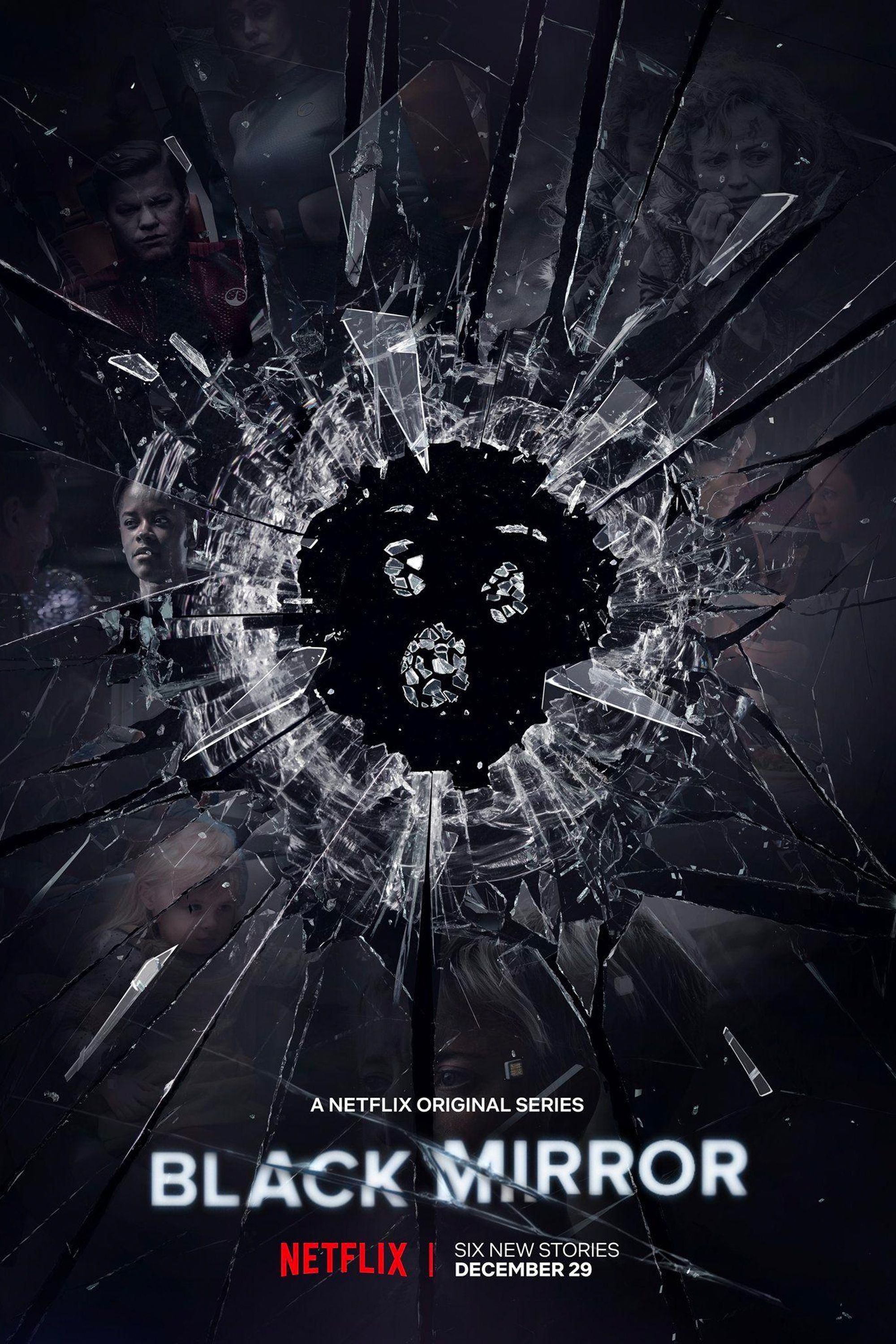
Black Mirror
Black Mirror is a sci-fi anthology TV series that shows the dark side of life and technology. The series was created by Charlie Brooker, with the first season premiering on British Channel 4 in 2011. Black Mirror is notable for its dark, satirical edge that provides social commentary, particularly in continuously evolving technology. Each episode has a different cast, location, and even reality as it further explores the themes of technological advancement and its potential positives and repercussions of overreliance on it.
- Release Date
- December 4, 2011
- Seasons
- 5
- Showrunner
- Charlie Brooker

